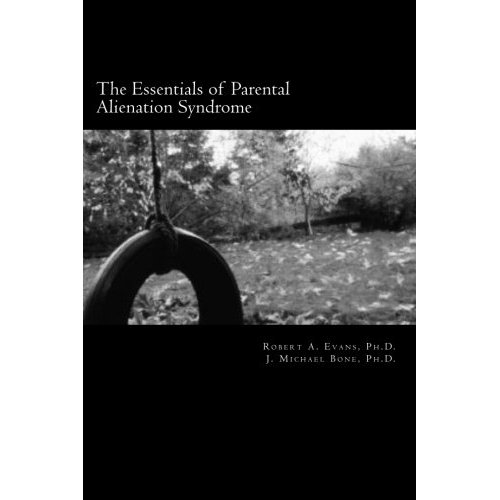This is a continuation of last weeks discussion on forced visitation and access between a child and the rejected or alienated parent, if you missed it, catch up here.
The goals of therapy with children diagnosed with Parental Alienation are to rehabilitate their relationship with an estranged parent and to foster healthy contact. Therapeutic interventions should be designed to assist children in developing and maintaining differentiated views of their parents as opposed to polarized views.
One way to get children back with the rejected parent is to remove the decision about contact from their hands and remind them of the impending sanctions against the alienating parent. This gives them an “excuse” to spend time with the rejected parent; now they would have to visit with them. A therapist working with that child also tries to help them understand how suggestible and easily influenced human beings are. Perhaps they would be able to see that their hatred of the other parent may have been influenced by programming influences. These influences may have undermined their ability to reach their own conclusions about their parent which would be better based on their own experiences with the rejected parent. This treatment is similar to the deprogramming techniques that are used with cult victims to counteract the effects of indoctrination.
In some cases, ranging from moderate to severe PA, where the alienating parent is intensively programming and there is a likely risk that the alienation will become more severe, Gardner recommended a different approach. In such cases he recommended awarding primary custody to the rejected parent and restricting contact between the alienating parent and child. This limited exposure to the alienating parent is done to prevent further indoctrination. If the alienation is severe enough and the alienating parent is likely to persist in their programming, then Gardner recommended that the children be removed from the home of the alienating parent.
Consider the analogy of working with a child who was kidnapped by a cult. It seems preposterous that we would allow a kidnapped child to maintain in frequent contact with the cult leader while we were rehabilitating their relationship with their biological parents. One reason we would prevent such contact is to eliminate the possibility that they would continue being contaminated. The same applies to an alienating parent. To remain in such a toxic environment would only escalate the problem.
Sometimes a transitional site is needed in order to rehabilitate the relationship.
In severe cases some are so severely alienated that they will not comply with court orders regarding visitation. In addition, the alienating parent will not facilitate contact with the rejected parent and the courts are reluctant to force children to visit with a parent because they express fear of that parent. In such cases they may benefit from a temporary placement in a transitional site before reintegrating the children with the target parent. Possible transitional sites range in restrictiveness from very little to most restrictive, depending on the amount of control needed to ensure the children’s cooperation and the alienating parent’s compliance with court orders. Such sites can include a grandparent’s home or that of a relative or friend. Moving up on the scale of restrictiveness can include a foster home, a community shelter, or even a hospital.
Even the threat of a temporary placement in a transitional site may induce a child to cooperate with court-ordered visitation. With an older child (ages 11-16) who refuses visits with the alienated parent, Gardner suggested finding the child in contempt of court. Gardner has been severely criticized for making this recommendation. Not only has this met with severe opposition, but he has been routinely misquoted about this issue.
Gardner had warned against unnecessary indulging of children’s visitation refusal. He believed the best way to reverse alienation is to provide a child with direct experiences which can counteract negative programming and correct the child’s distorted perceptions of the rejected parent. Supervised visitation, on the other hand, sends the message that the child’s fears of the rejected parent are rational and that the court agrees that the child needs some sort of protection from the rejected parent. Rather than increase the child’s sense of security around the rejected parent, it may reinforce the child’s uneasiness.
The results reported in Children Held Hostage, the American Bar Association sponsored study, supported a firmer approach to enforcing parent-child contact.
“One of the most powerful tools the courts have is the threat and implementation of environmental modification. Of the approximately four hundred cases we have seen where the courts have increased the contact with the target parent (and in half of these, over the objection of the children), there has been positive change in 90 percent of the relationships between the child and the target parent, including the elimination or reduction of many social-psychological, educational, and physical problems that the child presented prior to the modification”.
Gardner conducted and reported a follow-up study of 99 children diagnosed with PA and he found a strong correlation between environmental modification and reduction in PA symptoms. In 22 instances, the alienated child’s contact with the rejected parent was increased and contact with the alienating parent was decreased. In all 22 cases, PA symptoms were reduced or eliminated. By contrast, only 9% of the children (7 out of 77) whose contact with the rejected parent was not increased by the court, showed a reduction in PA symptoms.
Six years after Dr. Warshak wrote his article, it continues to be the case that all the published findings on treatment outcomes support the effectiveness of enforcing contact between the child and alienated parent and no findings oppose this policy. When robust body of literature available point to the same conclusion, we need to pay attention, while allowing for the possibility that the circumstances of any single case may dictate an alternative treatment approach.
No consensus, however, exists to recommend to the courts to transfer custody (as opposed to enforced contact) in severe PA cases. There has been expressed concern that alienated children cannot cope with the change in custody and they could be seriously harmed. While is certainly within the realm of possibility, however, if this result were likely it would not be unreasonable to find such reporting in the professional literature. There is no published documentation of such harm.
Warshak’s Family Bridges Workshop for Alienated Children has consistently been highly successful in reuniting rejected parents and their children. The track record is almost 100% in bringing families back together.
Some clinicians actually advise parents of severely alienated children to accept the loss of their children and simply hope for a possible future reconciliation. This flies in the face of Clawar’s and Rivlin’s conclusion:
“Caution must be exercised in judging that the point of no return has been reached. We have seen numerous cases where children have been successfully deprogrammed by making radical changes in their living arrangements—often with appropriate legal interventions.”
They explain:
“There are risks incumbent in any process; however, a decision has to be made as to what is the greater risk. It is usually more damaging socially, psychologically, educationally, and/or physically for children to maintain beliefs, values, thoughts, and behaviors that disconnect them from one of their parents (or from telling the truth, as in a criminal case) compared to getting rid of the distortions or false statements.”
It is almost never, a good idea to give up on an alienated child and to walk away hoping that at some time in the future they’ll find out the “truth.” They may never find the truth and in the interim they lose the benefits of having two parents in their life; a very significant loss, one that has a lifetime of consequences.


